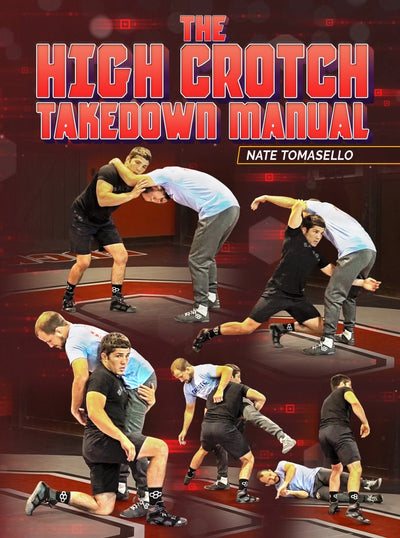Indian Leg Wrestling
In the world of wrestling, there exists a unique and ancient form known as Indian Leg Wrestling. Often called "Pehlwani" or "Naki Ka Kushti" in India, this traditional style of wrestling combines strength, technique, and cultural heritage. In this article, we will delve into the intriguing world of Indian Leg Wrestling, exploring its history, techniques, rules, and providing valuable tips for those curious to engage in this captivating sport.
What this article covers:
- A Glimpse into the History of Indian Leg Wrestling
- How to Indian Leg Wrestle
- Indian Leg Wrestling Rules
- Wrestling Tips for Success in Indian Leg Wrestling
Indian Leg Wrestling shares a fascinating relationship with various wrestling forms, including catch wrestling, shoot wrestling, barefoot wrestling, chain wrestling, and wrestling grappling. Catch wrestling, with its emphasis on submissions and pins, shares common elements with Indian Leg Wrestling in terms of control and technique. Shoot wrestling's incorporation of real-world self-defense moves resonates with the practicality seen in Indian Leg Wrestling. The tradition of competing barefoot in Indian Leg Wrestling mirrors the barefoot aspect of many wrestling disciplines, emphasizing grip and balance. Chain wrestling, characterized by a seamless flow of offensive and defensive moves, finds resonance in the back-and-forth nature of Indian Leg Wrestling matches. Finally, wrestling grappling techniques, crucial for maneuvering and controlling opponents, serve as a foundation for both Indian Leg Wrestling and these other wrestling forms, highlighting the interconnectedness of wrestling styles across cultures and histories.
Get the best wrestling conditioning instructionals here at FanaticWrestling.com!
A Glimpse into the History of Indian Leg Wrestling
Indian Leg Wrestling has its roots deeply embedded in Indian culture and history. It draws inspiration from various forms of traditional wrestling, including catch wrestling and shoot wrestling. Historically, Indian wrestlers or "Pehlwan" were revered in society and played an essential role in physical fitness and self-defense. The practice of Indian Leg Wrestling was a way to demonstrate strength, agility, and martial prowess.
How to Indian Leg Wrestle
Indian Leg Wrestling is a captivating sport that requires a combination of technique, balance, and strength. Here's a step-by-step guide on how to engage in this unique form of combat:
1. Preparing the Ground
- Find a suitable area with a flat and clean surface.
- Ensure the ground is free from any sharp objects or debris to avoid injuries.
2. Attire
- Competitors typically wear traditional loincloths or "langots," reminiscent of ancient wrestling attire.
- Barefoot wrestling is the norm in Indian Leg Wrestling to maintain a strong grip and balance.
3. Starting Position
- Sit facing your opponent with your legs extended straight.
- Lock your toes together and place your feet flat on the ground.
4. Grip
- Both competitors grip each other's hands firmly, with fingers interlocked.
- Maintain a strong and secure grip throughout the match.
5. The Contest
- The objective is to force your opponent's knee or thigh to touch the ground while keeping yours off the ground.
- Use a combination of strength and technique to push, pull, and manipulate your opponent's leg.
- Employ chain wrestling techniques by alternating between offensive and defensive moves.
6. Winning
- The wrestler who successfully pins their opponent's leg to the ground is declared the winner.
- Matches may consist of multiple rounds, and the best of three rounds or a predetermined number of rounds determines the overall winner.
Indian Leg Wrestling Rules
Understanding the rules of Indian Leg Wrestling is essential for a fair and exciting competition. Here are the key rules:
-
Starting Position: Wrestlers sit facing each other with their legs extended and toes locked together.
-
Grip: A firm interlocking of fingers is crucial. Wrestlers should not use their free hands to grab or strike their opponent.
-
Ground Rules: The objective is to force your opponent's knee or thigh to touch the ground while keeping your own knee off the ground.
-
Fouls: Striking, biting, scratching, or any unsportsmanlike behavior is strictly prohibited. Wrestlers found violating these rules may be disqualified.
-
Winning: The wrestler who successfully pins their opponent's leg to the ground is declared the winner. Matches can be won by securing the best of three rounds or a predetermined number of rounds.
-
Time Limits: Matches typically have a time limit for each round, usually ranging from 5 to 10 minutes, depending on the level of competition.
Wrestling Tips for Success in Indian Leg Wrestling
-
Balance and Core Strength: Develop a strong core and work on your balance. These attributes are essential for maintaining stability during the match.
-
Grip Strength: Improve your grip strength through specific exercises like grip trainers or hand grippers.
-
Technique Mastery: Learn various techniques, including offensive and defensive moves, to outmaneuver your opponent effectively.
-
Endurance Training: Indian Leg Wrestling can be physically demanding. Engage in endurance training to build stamina and keep your energy levels high throughout the match.
-
Flexibility: Incorporate stretching routines to enhance your flexibility, which can help you move more efficiently.
-
Mental Focus: Develop mental toughness and concentration to stay composed and make split-second decisions during the match.
-
Practice: Regular practice and sparring with experienced wrestlers are essential to improve your skills and gain a deeper understanding of the sport.
Get the best wrestling conditioning instructionals here at FanaticWrestling.com!
Indian Leg Wrestling, deeply rooted in Indian culture and history, offers a fascinating glimpse into the world of traditional wrestling. Drawing inspiration from various wrestling styles, this unique form of combat combines strength, technique, and cultural heritage. To succeed in Indian Leg Wrestling, one must master the art of balance, grip strength, and chain wrestling techniques while adhering to the sport's rules and traditions. As with any wrestling discipline, consistent practice, dedication, and a love for the sport are the keys to success in Indian Leg Wrestling, allowing enthusiasts to partake in a timeless tradition that has endured for generations.
Did you find the blog helpful? If so, consider checking out other guides:
- Mastering the Mat
- Wrestling vs. Football
- MMA Versus Wrestling
- PSU Versus Army Wrestling
- Sambo Versus Wrestling
- Big Versus Small Wrestling
- Differences Between Jiu Jitsu and Wrestling
- Muay Thai Versus Wrestling
- Martial Arts vs Wrestling
- Wrestling Weight Classes
- Best Wrestling Exercises
- Wrestling Bridge
- Neck Exercises for Wrestling
- Wrestling Grip
- How to Cut Weight for Wrestling











